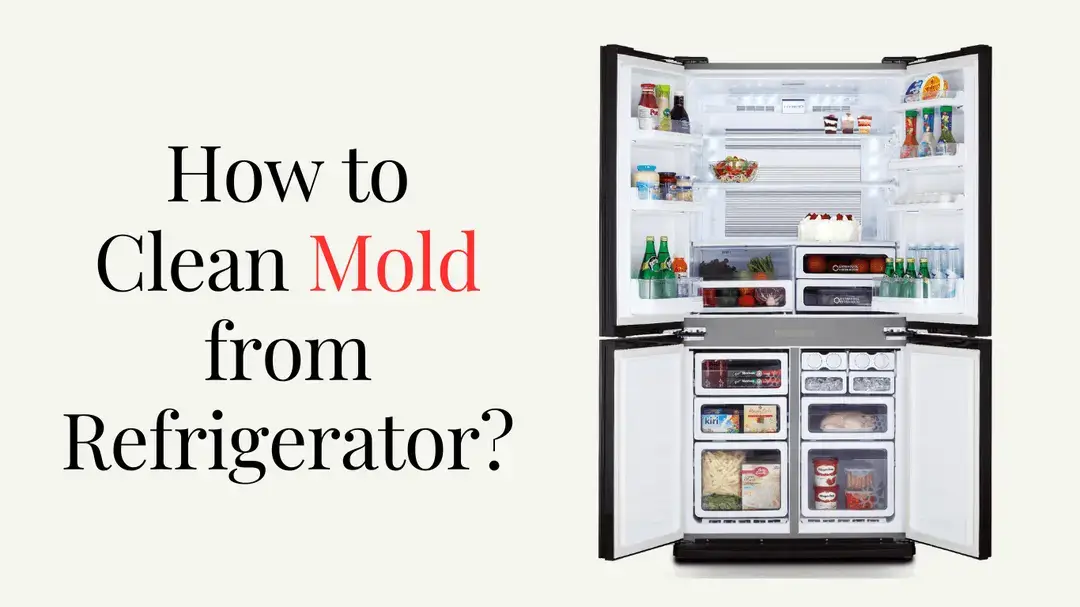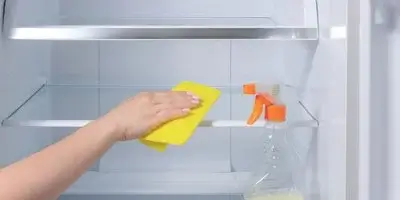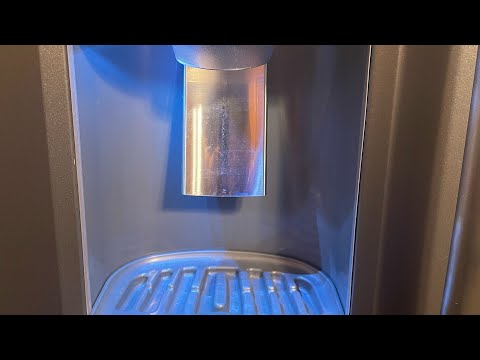Refrigerators are incredibly useful for storing food, but we need to take the time to clean it. Learn how to clean mold from refrigerator with our simple guide.
Table Of Contents

How to clean mold from Refrigerator?
Cleaning mold from a refrigerator is important to ensure the appliance remains clean, safe, and free from unpleasant odors. Here are the steps you can follow in cleaning mold from your Refrigerator:
- Empty the fridge: Removing all the food, drinks, and other items from the Refrigerator. Check each item for signs of decay and discard anything contaminated or expired.
- Remove shelves and drawers: Remove all the shelves, drawers, and other removable parts from the fridge. This will make it easier to access all the surfaces that need to be cleaned.
- Prepare a cleaning solution: Mix one part white vinegar with one part water in a spray bottle. Add a few drops of tea tree oil for extra disinfecting power.
- Spray the solution: Spray the cleaning solution generously on all surfaces with mold. Cover all the nooks and crannies, including the corners, hinges, and rubber gaskets.
- Let it sit: Allow the cleaning solution for 10-15 minutes. This will give it time to loosen and kill the mold.
- Scrub the surfaces: Use a scrub brush or sponge to scrub all the decayed characters. Pay extra attention to areas that are very dirty or have stains. Use a toothbrush to clean the rubber gaskets and corners.
- Rinse and dry: Rinse all the surfaces with clean water and dry them with a clean towel. Dry all the parts thoroughly before putting them back in the fridge.
- Clean the exterior: Remember to clean the fridge’s surface too! Wipe it down with vinegar and water or a gentle all-purpose cleaner.
- Dispose of any contaminated food: Finally, dispose of any food or drinks the mold may have infected. Clean the containers thoroughly before using them again.
What makes mold grow in your Fridge?
Mold can grow inside your Refrigerator because of a few reasons. If there are spills or too much moisture, mold can thrive. So, it’s important to clean up spills and leaks quickly. If the temperature inside the fridge is too warm, mold can also grow easily. It would help if you kept the temperature within the recommended range. If there’s not enough air circulation, moisture can build up and cause mold growth. So, ensure the fridge has good ventilation and leaves space between items. Finally, mold can spread from one food item to another. To prevent this, store your food in sealed containers and throw away anything expired or moldy.
How to clean mold from Refrigerator ice dispenser?
To prevent Refrigerator ice dispenser mold, you can simply:
- Unplug your Refrigerator and remove the ice dispenser tray.
- Use warm water and mild detergent to clean the tray thoroughly. You can also add a small amount of vinegar to the solution to help kill any remaining mold spores.
- Wash the tray with clean water and dry it using a clean cloth.
- Use a damp cloth to wipe down the inside of the dispenser area, including the chute and the surrounding surfaces. Be sure to clean all areas where mold may be present.
- You can make a baking soda paste and water for stubborn mold stains and apply them to the affected areas. Allow the paste to sit for a few minutes before scrubbing the area with a soft brush or cloth.
- Rinse the dispenser area with clean water and dry it with a clean cloth.
- Reinsert the ice dispenser tray and plug your Refrigerator back in.
Can the mold present in my Refrigerator be harmful?
Yes, the mold present in your Refrigerator can be harmful. Mold can produce mycotoxins, toxic compounds that can cause health problems such as allergic reactions, respiratory problems, headaches, and even neurological issues if ingested in large amounts. In addition, mold can also spoil food and make it unsafe to eat. It’s important to clean and maintain your Refrigerator regularly to prevent mold growth and ensure your food is safe to consume.
How to stop Refrigerator mold from coming back?

To avoid food spoilage and mold growth in the Refrigerator:
- Consume perishable items before they expire. You can also freeze meats, cheeses, and milk to prevent bacterial growth.
- Throw away any food that has expired.
- Be vigilant with mold-prone foods, including fruits, vegetables, and cheeses.
- Covering food with plastic wrap, tin foil, or food-safe containers will prevent mold from becoming airborne and spreading to other surfaces in and out of the fridge.
To maintain a clean refrigerator, repeat the above cleaning procedures at least once a month.
Conclusion
To clean mold from a refrigerator, it’s important to unplug the appliance and remove all food items. Then, use a mixture of water and either vinegar or bleach to clean the affected areas, making sure to wear gloves and protective eyewear. Scrub the mold away using a sponge or brush, and rinse with clean water. Allow the Refrigerator to fully dry before plugging it back in and restocking it with food. It’s also important to regularly clean and inspect the Refrigerator to prevent mold growth in the future.
